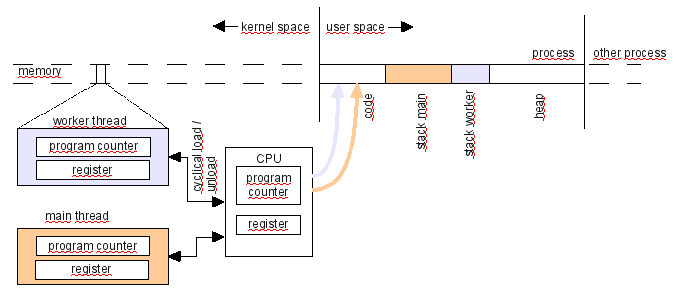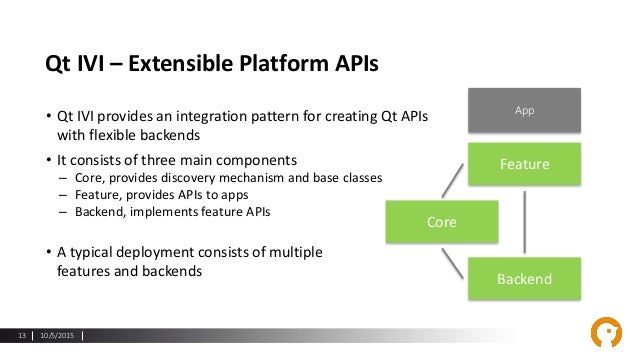Qt Signal Slot Pass Reference
Posted : admin On 4/13/2022QStrings should be passed by const references whenever possible (const QString &something), including signals, slots, functions. Reply Quote 0 1 Reply Last reply. Qt - Passing custom objects among threads. Details Category: Programming Written by Nandan Banerjee Hits: 13021 Communication between threads in a qt program is essentially done by using signals/slots. This is by far one of the most easiest and stable mode of communication amongst threads of a program. Support for signals and slots pyqt 5.10.1 reference guide support for signals and slots one of the key features of qt is its use of signals and slots to.
Qt Signal Slot Pass Reference Chart
This section describes the older style for connecting signals and slots. Ituses the same API that a C++ application would use. This has a number ofadvantages.
- It is well understood and documented.
- Any future changes to the C++ API should be easily included.
It also has a number of disadvantages.
- It requires knowledge of the C++ types of signal arguments.
- It is error prone in that if you mis-type the signal name or signature thenno exception is raised, either when the signal is connected or emitted.
- It is verbose.
- It is not Pythonic.
This older style of connecting signals and slots will continue to be supportedthroughout the life of PyQt4.
PyQt4 Signals and Qt Signals¶
Qt signals are statically defined as part of a C++ class. They are referencedusing the QtCore.SIGNAL() function. This method takes a single stringargument that is the name of the signal and its C++ signature. For example:
The returned value is normally passed to the QtCore.QObject.connect()method.
PyQt4 allows new signals to be defined dynamically. The act of emitting aPyQt4 signal implicitly defines it. PyQt4 signals are also referenced usingthe QtCore.SIGNAL() function.
The PyQt_PyObject Signal Argument Type¶
It is possible to pass any Python object as a signal argument by specifyingPyQt_PyObject as the type of the argument in the signature. For example:
While this would normally be used for passing objects like lists anddictionaries as signal arguments, it can be used for any Python type. Itsadvantage when passing, for example, an integer is that the normal conversionsfrom a Python object to a C++ integer and back again are not required.
The reference count of the object being passed is maintained automatically.There is no need for the emitter of a signal to keep a reference to the objectafter the call to QtCore.QObject.emit(), even if a connection is queued.
Short-circuit Signals¶
There is also a special form of a PyQt4 signal known as a short-circuit signal.Short-circut signals implicitly declare each argument as being of typePyQt_PyObject.
Short-circuit signals do not have a list of arguments or the surroundingparentheses.
Short-circuit signals may only be connected to slots that have been implementedin Python. They cannot be connected to Qt slots or the Python callables thatwrap Qt slots.
PyQt4 Slots and Qt Slots¶
Qt slots are statically defined as part of a C++ class. They are referencedusing the QtCore.SLOT() function. This method takes a single stringargument that is the name of the slot and its C++ signature. For example:
The returned value is normally passed to the QtCore.QObject.connect()method.
PyQt4 allows any Python callable to be used as a slot, not just Qt slots. Thisis done by simply referencing the callable. Because Qt slots are implementedas class methods they are also available as Python callables. Therefore it isnot usually necessary to use QtCore.SLOT() for Qt slots. However, doing sois more efficient as it avoids a conversion to Python and back to C++.



Qt allows a signal to be connected to a slot that requires fewer arguments thanthe signal passes. The extra arguments are quietly discarded. PyQt4 slots canbe used in the same way.
Qt Signal Slot Pass Reference Tool
Note that when a slot is a Python callable its reference count is notincreased. This means that a class instance can be deleted without having toexplicitly disconnect any signals connected to its methods. However, if a slotis a lambda function or a partial function then its reference count isautomatically incremented to prevent it from being immediately garbagecollected.
Connecting Signals and Slots¶
Connections between signals and slots (and other signals) are made using theQtCore.QObject.connect() method. For example:
Disconnecting signals works in exactly the same way using theQtCore.QObject.disconnect() method. However, not all the variations ofthat method are supported by PyQt4. Signals must be disconnected one at atime.
Qt Signal Slot Pass Reference Sheet

Emitting Signals¶
Any instance of a class that is derived from the QtCore.QObject class canemit a signal using its emit() method. This takes a minimum of oneargument which is the signal. Any other arguments are passed to the connectedslots as the signal arguments. For example:
The QtCore.pyqtSignature() Decorator¶
The QtCore.pyqtSignature() serves the same purpose as thepyqtSlot() decorator but has a less Pythonic API.